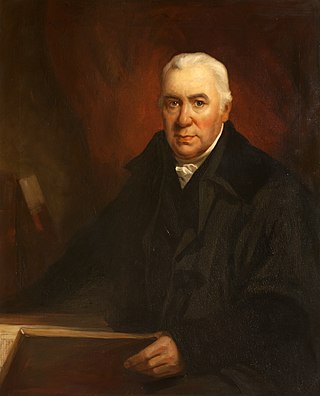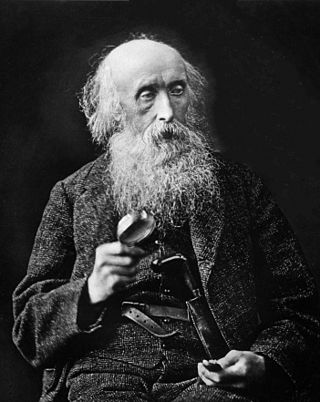
Henry Thomas Colebrooke FRS FRSE FLS was an English orientalist and botanist. He has been described as "the first great Sanskrit scholar in Europe".

Daniel Rutherford was a Scottish physician, chemist and botanist who is known for the isolation of nitrogen in 1772.

John Hutton Balfour was a Scottish botanist. Balfour became a Professor of Botany, first at the University of Glasgow in 1841, moving to the University of Edinburgh and also becoming the 7th Regius Keeper of the Royal Botanic Garden Edinburgh and Her Majesty's Botanist in 1845. He held these posts until his retirement in 1879. He was nicknamed Woody Fibre.

William Roxburgh FRSE FRCPE FLS was a Scottish surgeon and botanist who worked extensively in India, describing species and working on economic botany. He is known as the founding father of Indian botany. He published numerous works on Indian botany, illustrated by careful drawings made by Indian artists and accompanied by taxonomic descriptions of many plant species. Apart from the numerous species that he named, many species were named in his honour by his collaborators. He was the first to document the existence of the Ganges river dolphin.

John Fleming FRSE FRS FSA was a Scottish Free Church minister, naturalist, zoologist and geologist. He named and described several species of mollusc. During his life he tried to reconcile theology with science.

John Forbes Royle, British botanist and teacher of materia medica, was born in Kanpur in 1798. He was in charge of the botanical garden at Saharanpur and played a role in the development of economic botany in India.

John Muirhead Macfarlane FRSE LLD was a Scottish botanist.

Frederick Orpen Bower FRSE FRS was an English botanist. He was elected a Fellow of the Royal Society in 1891. He was awarded the Gold Medal of the Linnean Society in 1909 and the Darwin Medal of the Royal Society in 1938. He was president of the British Association in 1929–1930.

Robert Graham was a Scottish physician and botanist.
George Dickie was a Scottish botanist, who specialised in algae.

James Edward Tierney Aitchison MD LLD CIE was a Scottish surgeon and botanist. He worked as British Commissioner to Ladakh, India in 1872 and collected numerous specimens from the region and published catalogues of plants including those of economic interest. The plant genus Aitchisonia was named after him by Helmsley but the name is no longer in use. In authorship he is normally known as J. E. T. Aitchison.

Francis Chalmers Crawford FRSE (1851–1908) was a Scottish stockbroker of fame as an amateur botanist and ornithologist. Saxifraga crawfordii is named after him. He served as President of the Scottish Microscopical Society.
Prof David Ellis FRSE (1874–1937) was a Scottish bacteriologist, botanist and baker. He was an academic author in all three fields.
Andrew Peebles Aitken FRSE FBSE (1843-1904) was a Scottish agricultural chemist remembered primarily for his research into fertiliser response times. He laid the foundations of modern understanding of increased crop yields through the use of artificial fertilisers.
Robert James Douglas Graham FRSE (1884–1950) was a Scottish botanist.

William Jameson CIE FRSE (1815-1882) was a Scottish physician and botanist linked to the massive spread of tea plantations in North India in the 19th century.

William McRae FRSE CIE was a Scottish botanist specialising in fungi and lichens. He is largely remembered for his extensive work in India.
George Swinton FRSE (1780–1854) was a Scottish civil servant who served as Chief Secretary to the British government during their colonial rule of India. During this time he was also a noted botanist.
John WaltonLLD (1895–1971) was a 20th-century British botanist and paleobotanist.
Richard Chandler Alexander Prior was an English physician, botanist, plant collector, author, translator, antiquarian, and landowner. His principal work is On the Popular Names of British Plants: Being an Explanation of the Origin and Meaning of the Names of Our Indigenous and Most Commonly Cultivated Species.













